The 140mm Slim Tower CPU Cooler Roundup: Thin & Light Done Just Right
by E. Fylladitakis on May 24, 2017 8:00 AM EST- Posted in
- Cases/Cooling/PSUs
- be quiet!
- Noctua
- Phanteks
- Cooler
- Thermalright
Noctua NH-U14S
Starting things off, we have the Noctua NH-U14S. Noctua supplies the NH-U14S inside a large, sturdy cardboard box. The artwork on the box is austere, limited to providing useful information about the cooler itself.
Inside the box everything is individually packed into separate cardboard boxes. Alongside with the mounting hardware, Noctua is also offering a basic screwdriver for the installation of the cooler, a fan speed reducer, a metallic case badge and a syringe with NT-H1 thermal compound.
Noctua offers a very large selection of CPU coolers, with at least one product per cooler type. The NH-U14S is their version of a single tower cooler that makes use of a 140 mm fan and, according to Noctua, it has been designed so as to offer the best possible overall performance while staying clear of the LGA2011/LGA2066 RAM slots. It also is slightly taller than the other coolers of this review, even if only by 4-5 mm (0.15”-0.2”).
The company characterizes the NH-U14S as a “slim” cooler, but the dense fin array is 52 mm deep and 150 mm wide, providing more than ample heat dissipation surface. In theory, the cooler should be able to handle thermal loads well above 200 Watts. The top fin of the array is not thicker but has the company’s logo and name engraved on it.
The NH-U14S makes use of six thick heatpipes to transfer the heat from the base of the cooler to its fin array. Each heatpipe expands to either side of the fin array and the designers had each heatpipe expanding at a different distance from the center of the fin array, resulting to twelve evenly distributed thermal energy transfer lanes from the base of the cooler to fin array. The heatpipes are made of copper but are nickel plated. The joints are all soldered, ensuring maximum thermal transfer and mechanical cohesion.
Only the bottom part of the cooler’s base that makes contact with the processor is made out of copper. The top half of the base is made out of aluminum and the mounting bracket is nickel-plated steel. As only the bottom part actually contributes on the transfer of the thermal energy from the CPU to the heatpipes, this is a very reasonable design for the reduction of a cooler’s weight and overall cost. A full copper base would substantially increase the weight of the design without offering any advantage.
The copper base of the NH-U14S has also been nickel plated and is very smooth, yet not machined down to a perfect mirror finish. It appears to be easy to clean and difficult to soil. Noctua generally does not polish the bases of their coolers as it makes no apparent difference on performance, so they opt to not raise the cost of their products even higher for something that would not make an actual difference.


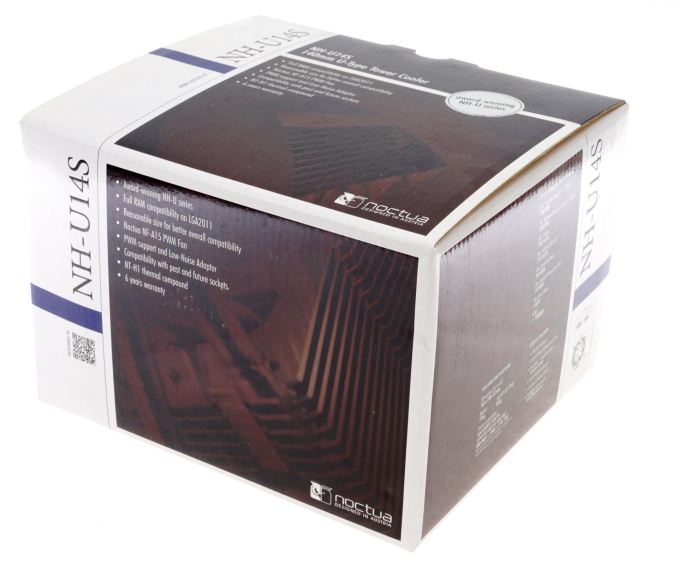
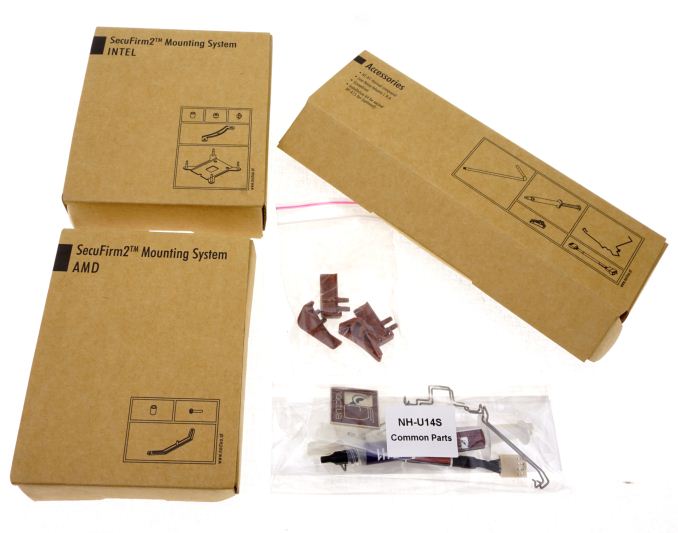
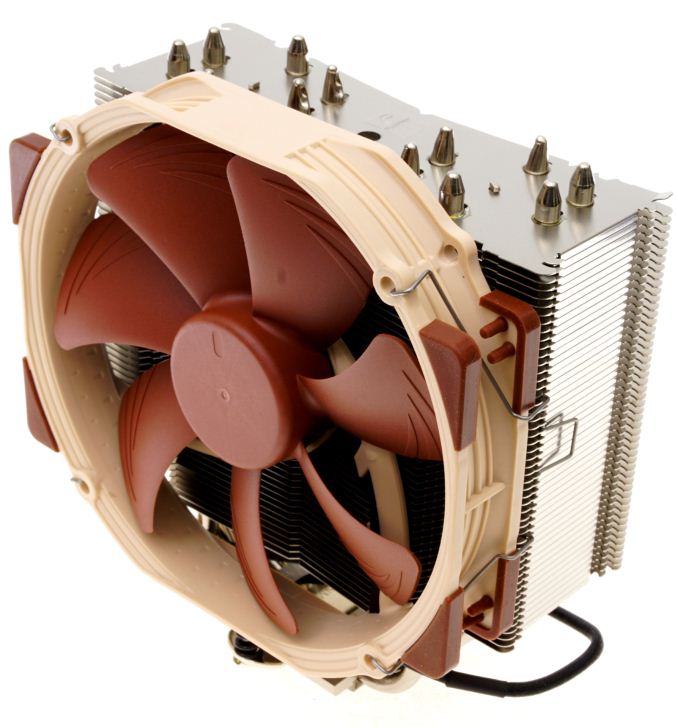
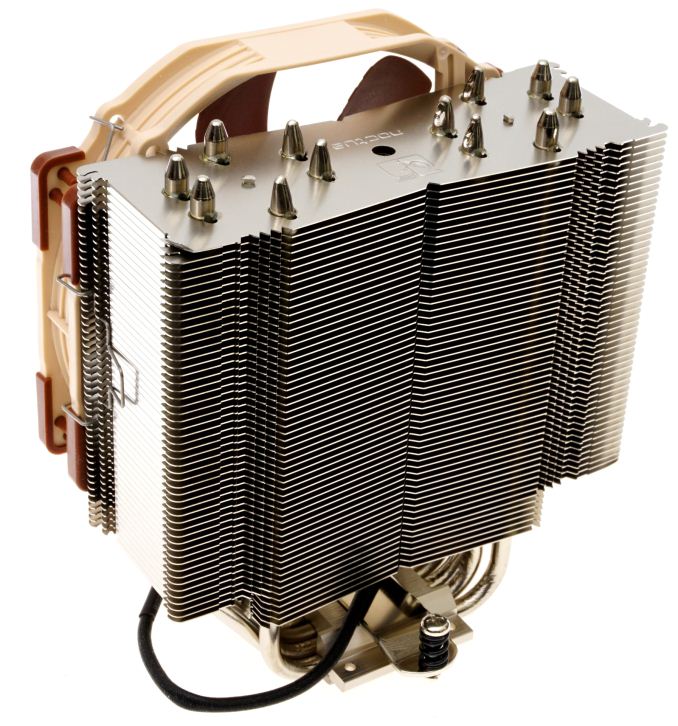
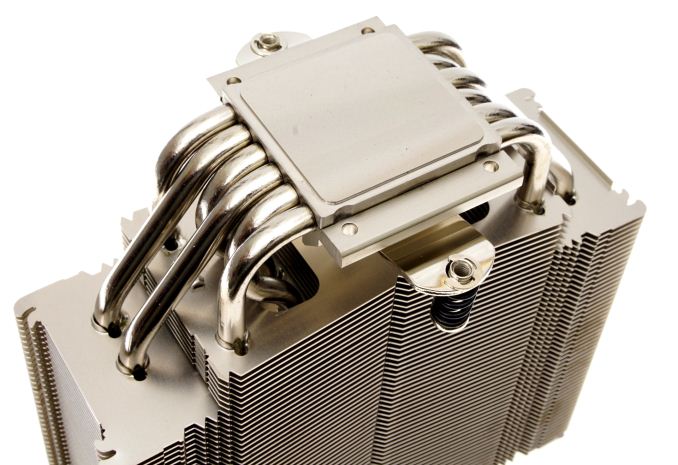









74 Comments
View All Comments
Samus - Wednesday, May 24, 2017 - link
I think the thermalright cooler is pretty hard to ignore unless you are running a high-wattage CPU. Mild overclocks of a typical 80w CPU will make the thermalright the ideal solution at ~100w load, and also the quietest.Communism - Wednesday, May 24, 2017 - link
The problem with E. Fylladitakis 's style of testing is that they miss major factors in how the things tested actually function in relation to what they are made for.The reason why Noctua always does "better" in these synthetic tests is that they generally have a 100% flat contact surface.
The problem with 100% flat contact surfaces is that CPU IHS aren't anywhere close to 100% flat surfaces.
Most CPU IHS are concave, which is why Thermalright HSF always have convex contact surfaces.
Clamping pressure is also highly important, especially for Intel's non-soldered IHS CPUs.
Higher Clamping pressure both reduces the distance between the silicon and the IHS as well as forms a better mating between the IHS and the convex Thermalright contact surfaces.
These, and many other major factors that crop up in the real world make the 100% artificial testing like E. Fylladitakis conducts in actually have an extremely large margin of error, making them far less useful than the testing "scienciness" would lead you to believe.
fanofanand - Thursday, May 25, 2017 - link
If what you are suggesting is true, we should see Thermalright outperforming Noctua in every other publication's testing, correct? Most review sites (I believe all other sites actually) test CPU cooler performance on an actual CPU running tests, and more often than not inside of an actual computer case. Yet those same tests bring very similar results to what Anandtech has shown, which would appear to invalidate your entire postulation. How do you explain the lack of disparity between these other journalists' "real world" cases, and what Anandtech has done?Communism - Thursday, May 25, 2017 - link
Keep up your rhetorical questions.I don't know why I bother posting on this shill infested site anyways, waste of my time.
I'm not going to spoon-feed you for 20 posts like the forums.
I've spoonfed you for literally 100 posts before on the forums and your shill self has never acknowledged anything, making this a pointless conversation by any metric.
Have fun shilling with the other shills, adequate journalism in technology died quite a long time ago, and it shows.
Zetbo - Friday, May 26, 2017 - link
What a loser you are. When the data does not backup your point of view...you call everyone a shill! Thats the way to go! :DCommunism - Friday, May 26, 2017 - link
Took you a whole day to make another account?You really should get your pay docked.
Keep going and you're getting doxed.
fanofanand - Friday, May 26, 2017 - link
Doxx me big boy :)fanofanand - Friday, May 26, 2017 - link
Uh, I'm not on the forums, have you been taking mushrooms? I did read that they are the "least dangerous" psychadelics, but you seem to have overindulged. Apparently my point was irrefutable as you chose not to refute anything I wrote.BrokenCrayons - Friday, May 26, 2017 - link
The testing methods used in these HSF reviews are perfectly adequate because they remove a number of uncontrollable variables that would result from testing with PC hardware. The simulator equipment can produce repetable results with little to no variance between tests within AT's limited budget. I much prefer artifical tests as the basis for relative comparisons since the tests performed by other review sites won't accurately emulate my specific computing environment anyway and are therefore only useful as similarly relative comparisons. The science of these results appear trustworthy.WinterCharm - Thursday, May 25, 2017 - link
Funny how Thermalright performed better than Noctua at low and high fan speeds, then!